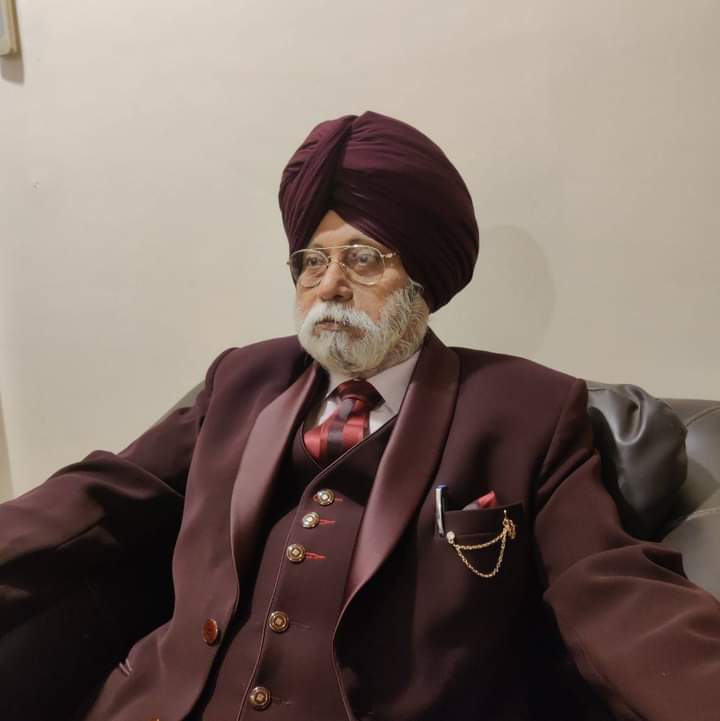FROM FIRST TO LAST: THE CASE OF THE TURKISH TURNCOAT
The 20th century was born, psychologically speaking, with the 1900 publication of Sigmund Freud’s “The Interpretation of Dreams.” Out of this book, psychoanalysis quickly matured into a bold, contentious philosophy, ready and able to challenge the basic tenets of many disciplines. Freud and most of his early followers were Jews, but their precepts and even their mood were so radically different from those of rival schools of thought that the ultimate antecedents of psychoanalysis remain a mystery despite various attempts to trace its genealogy.
Some four decades after “The Interpretation of Dreams” appeared, Immanuel Velikovsky, one of Freud’s professional colleagues, published a comprehensive reinterpretation of the origins of psychoanalysis. “The Dreams Freud Dreamed” appeared in “Psychoanalytic Review” 28 (Oct. 1941). In Velikovsky’s analysis Freud’s own dreams — the foundation of all that came later — dealt with “his inner struggle for unhampered advancement: In order to get ahead he would have to conclude a Faust-pact: he would have to sell his soul to the Church.”
Velikovsky employed Freud’s own psychoanalytic methods to uncover Freud’s hidden motives. He examined 16 of Freud’s dreams, 10 of them in great detail; in his understanding, all of them contained evidence of the same internal conflict. But one of the dreams included an important element which Velekovsky admitted he could not readily fit into his general scheme, though he should have been able to do so.
Velikovsky called the episode the “Dream About the Woman in the Kitchen and the Stranger.” In Freud’s account the dream ended this way:
“I want to put on an overcoat; but the first I try on is too long. I take it off, and am somewhat astonished to find that it is trimmed with fur. A second coat has a long strip of cloth with a Turkish design sewn into it. A stranger with a long face and short, pointed beard comes up and prevents me from putting it on, declaring that it belongs to him. I now show him that it is covered all over with Turkish embroideries. He asks: ‘How do the Turkish (drawings, strips of cloth…) concern you?’ But we soon become quite friendly.” [tr. A. A. Brill]
Velikovsky interpreted that section of the dream as follows:
“We know that a stranger in a dream is usually the father…. Likewise the overcoat which is too large (Jews wear long overcoats) is that of the father. He is surprised in the dream ‘that the coat is trimmed with fur’. Eight pages earlier the story of the father’s fur cap which was thrown into the mud by a Christian is told…. He tries on a Jewish coat (trimmed with fur, father’s religion) and afterwards a foreign (Turkish) one. Why ‘Turkish’ was chosen for foreign I can not say definitely without the assitance of the necessary associations. But Viennese history considers the Turk especially as the foreigner.”
Even as Velikovsky was completing the article, Freud was dying, so his own associations with “Turkish” are lost to us forever. In the article itself Velikovsky specifically warned against analysts making arbitrary associations on behalf of analysands. However, an interdisciplinary approach may succeed where a more specialized one lacks sufficiant information to make a proper evaluation.
A year before Velikovsky was examining Freud’s psychic pattern, Gershom G. Scholem, the first professor of Jewish mysticism and the Kabbala at the Hebrew University in Jerusalem, (and, incidentally, the husband of a distant relative of Freud) had come to the startling conclusion that the 19th-century process of Jewish enlightenment and assimilation to European society owed its impetus to a 17th-century heresy named after Sabbatai Zevi (1625-1676). A member of the Sephardic community in Smyrna (modern Izmir, Turkey), at an early age he became imbued with the Kabbalistic teachings of Isaac Luria, a prominent mystic of the previous century. However, he transformed Luria’s arcane teachings into a radical popular movement. As Scholem wrote,
“Sabbatianism represents the first serious revolt in Judaism since the Middle Ages; it was the first case of mystical ideas leading directly to the disintegration of the orthodox Judaism of ‘the believers’. Its heretical mysticism produced an outburst of more or less veiled nihilistic tendencies among some of its followers. Finally it encouraged a mood of religious anarchism on a mystical basis which, where it coincided with favorable external circumstances, played a highly important part in creating a moral and intellectual atmosphere favorable to the reform movement of the nineteenth century.”
As early as 1648 Zevi publicly uttered God’s mystical full name, an act which many devotees interpreted as revealing himself as the long-awaited Messiah. Driven from Smyrna by the horrified rabbis, he spent several years abroad before he returned home in 1665 to proclaim that the next year would signal the beginning of Jewish redemption. From Smyrna he proceeded to Constantinople in order to “depose” the Osmanli sultan. Mehmed IV’s initial response was to remove a nuisance by imprisoning Zevi at Abydos. However, the prison became transformed into a place of pilgrimage. To head off possible unrest the sultan threatened to execute the Messiah unless he publicly converted to Islam. Thus, as “Mehmet Effendi,” Zevi accepted a sinecure at the Turkish court before being banished to Albania, where he died in obscurity.
Humiliated and degraded by Zevi’s apostasy, his followers sought some sort of rationalization for the act. It thus came to symbolize a radical paradox, a mystical form of redemption. They were supported in their interpretation by the experience of the Maranos, Jews who had “converted” to Christianity in the 15th century as an alternative to expulsion from Spain but who continued to practice their ancient rites in secret.
The movement was revived in an especially radical form a century later by Jakub Frank (c.1726-1791), a rabbi’s son who claimed to be a reincarnation of both Zevi and the patriarch Jacob. The Jewish authorities in Poland expelled him due to his heretical doctrines including the deification of himself as a part of a trinity and his denial of the traditional opposition between good and evil. He incorporated sexual practices into his teachings and advocated “purification through transgression,” regarding participation in all forms of behavior as a means of liberation. The Sabbatians informed the bishop of Kamenetz-Podolsk that they rejected the Talmud and recognized only the Zohar, the sacred book of Kabbalah, which did not contradict the Christian doctrine of the trinity. Then Frank claimed that he had recieved a heavenly revelation calling on his adherents to adopt the “religion of Edom” (Christianity) as a transition to the true religion (which he called das, “knowledge’) to be revealed later. In 1759 the Frankists were baptized in Lwów, with members of the Polish szlachta (nobility) acting as godparents; the neophytes adopted their surnames and joined their ranks, and king Augustus III served as Frank’s own godfather. By 1790, 26,000 Jews in Poland converted. (Isaac Bashevis Singer vividly presented a picture of the movement in Poland in his first novel, “Satan in Goray.”) Nevertheless, Frank was arrested for heresy in 1760 and imprisoned in the monastery of Częstochowa, though his influence continued to grow. After the first partition of Poland he was released by the Russian military in 1803 and frequently traveled to Vienna, where empress Maria Theresa regarded him as a disseminator of Christianity among the Jews. Ultimately, Frank and his retinue moved to Germany, where he adopted the title “Baron von Frank” of Offenbach.
The Frankist leader in Prague, Jonas Wehle (1752-1823), intellectually linked Luria and Zevi with Moses Mendessohn and Immanuel Kant; Aaron Chorin (1766-1844), the founder of Reform Judaism in Hungary, a former member of a Sabbatian group in Prague, ordained his protege Leopold Loew (1811-1875), who the first to deliver his sermons in Magyar; Loew specifically attributed a large role in rationalist propaganda and encouragement to the Sabbatians.
The defenders of rabbinical orthodoxy did everything they could to ridicule, destroy, and belittle the importance of the heresy, though Scholem pointed out that “various moderate forms” existed “in which orthodox piety and Sabbatian belief existed side by side, and the number of more or less outstanding rabbis who were secret adherents of the new sectarian mysticism was far larger than orthodox apologists have ever been willing to admit.” The belief became particularly influential among traders and manufacturers, who helped promote a mood that led to a basic reorientation of Jewish culture. In this respect, at least, the Sabbatians were like some Christian sectarians, such as the Quakers and Anabaptists, who, according to Scholem, “created an atmosphere in which the rationalist movement, in spite of its very different origins, was enabled to grow and develop, so that in the end both worked in the same direction.”
Scholem also sketched some of the links he saw between Sabbatiansism and more modern aspects of Jewish culture, in particular its relation to the origins of the Jewish Enlightenment and Hasidism (while at the same time denouncing the view that Hasidism was the impetus for emancipation as a “romantic misconception”). The founder of the Hasidist movement, Israel Ben Eliezer Ba’al Shem Tov (“Besht,” c. 1700-1760) may have been a participant in the disputations between Frank and the Christians, and many of his early followers were probably Sabbatians; he derived much of his own mytical inspiration from moderate Sabbatians such as Joshua Heshel Zoref (1633-1700).
In “The Slayers of Moses,” Susan A Handelman of the University of Maryland noted that Scholem investigated “what had been consigned to what Scholem calls the ‘cellar’ of Jewish history…. But a cellar is also the foundation of the house….” University of Missouri psychology professor David Bakan had already added a new wing to the house that Scholem built. In “Sigmund Freud and the Jewish Mystical Tradition,” he claimed that “Freud, consciously or unconsciously, secularized Jewish mysticism; and psychoanalysis can intelligently be viwed as such a secularization… By separating the supernatural elements in mysticism from its other content, Freud succeeded in making a major contribution to science.”
In a general sense, according to Bakan, Jewish mystical thought was “in the air” throughout Eastern Europe, even to the extent of being embodied in “the common oral expressions” of the Jews. But Freud’s biography specifically links him to some expressions of the mystical thought endemic to the middle of the 19th century. He was born in Moravia, one of the Western strongholds of Sabbatianism. (After his imprisonment, Frank had lived in the Moravian town of Brno until 1786.) The other branch of his family had migrated to Romania, another Sabbtian hotbed, but maintained close communication with Freud’s family; in 1886 one of his sisters married one of her Romanian relatives. Both of Freud’s parents came from areas that were strongly Hasidic; his father was born in Tysmenite, an early asimilationist community which openly espoused the cause of Polish nationalism, and his mother’s family was from Brody, which had been famous as a great anti-Frankist center in the late 18th century before becoming a Hasidic community and a prime area of diffusion in the areas affected by the Berlin Enlightenment.
Freud’s wife also had an interesting background. At the urging of her brother, who was already married to Freud’s sister, she broke tradition by breaking her engagement to another man she did not love. Her grandfather had been a well-known Hamburg rabbi who was vociferously opposed to the Reformers’ repudiation of messianic beliefs (and had been the object of a polemic written by Noah Mannheim, a Reformist rabbi who had performed the wedding ceremony for Freud’s parents); the grandfather was described by Meyer Waxman as “a queer and eccentric personality and his philosophy of Judaism was full of mystic vagaries, some of which were contrary and foreign to the true Jewish spirit.” One of his sons, Freud’s wife’s uncle, had converted to Christianity and obtained an important position at the court of Ludwig I of Bavaria.
Given these circumstances, Freud must have grown up and matured in a milieu of Hasidistic and perhaps even crypto-Sabbatianist mysticism. As an adult he exhibited many traits that are associated with Frankist beliefs. He was fiercely proud of his Jewish heritage (for instance in his praise for Hannibal of Carthage as a Semitic hero), even though he completely rejected its religious beliefs and even though he sometimes dissembled about some of his Jewish connections in order to protect his ideas from racially motivated criticism. Like the Sabbatians, he opposed the orthodox creed while elaborating his own rival set of myths; he may have thus regarded himself as a sort of secular messianic figure. He was indefatigable in his search for intimate knowledge of the forbidden areas of behavior, especially those concerning sex, and in his belief that reality may be apprehended by the intellect.
In a particularly interesting passage, Bakan made an extended comparison of Freud’s presentation of the “dream of Irma’s injection” with the techniques used in the “Zohar.” He also relied heavily on a 1933 Velikovsky article, which traced the seeds of psychoanalytic dream interpretation to very early Jewish texts.
One of the major planks in Bakan’s construction was his interpretation of Freud’s final book, “Moses and Monotheism.” In Velikovsky’s words its theses were “that Moses was an Egyptian prince, a pupil of Akhnaton; that Akhnaton was the founder of montheistic idealism; that when Akhnaton ceased to rule and his schism fell into disfavor, Moses preserved his teachings by bringing them to the slaves, with whom he left Egypt.” Thus its entire purpose was to deprive Jews of Judaism itself. According to Bakan, it was a Kabbalistic work, fearfully written with deliberate obscurity as a book with a double content. “It is, by any of the usual criteria used to evaluate books, incredibly bad. Some of the followers of Freud have tended to dismiss it; and, by some, it is regarded as the product of senility…. If this book had not come from the hand of Sigmund Freud, one would seriously doubt whether it would ever have seen the light of day.” Nevertheless, the book “expresses some of his deepest impulses, impulses which were operative throughout his life. The book is the only one written by Freud which directs itself avowedly to the problem of Judaism and the meaning of being Jewish.”
In an anonymous article, “The Moses of Michelangelo,” written many years earlier, Freud had symbolically transformed the prophet into a gentile by being the subject of a papal funerary statue. This urge was carried to its ultimate expression a quarter century later, in what would in effect be his last will and testament. In Bakan’s analysis, both Zevi and Frank became gentiles; thus, the “ultimate fulfillment of the theme of Sabbatianism is to have Moses, the most profound Messianic figure of Judaism and the image of all other Messiahs, already be Gentile…. By converting Moses into a Gentile, Freud committed his psychological act of apostasy.”
Bakan shrank from stating baldly that Freud was a secret adept of some esoteric sect. “An image of him poring over Kabbalistic books in the dead of night is not supported by the facts; although to have done this would not have been inconsistent with the patterns of the Jewish mystical leaders.” But Bakan’s contention that Freud may have been motivated by some deep-seated knowledge of Kabbalistic lore, even if that knowledge were second-hand, leads us back to Velikovsky’s efforts to unravel Freud’s psyche.
Many years after “The Dreams Freud Dreamed,” Velikovsky recalled that the catalyst for his own reinterpretation of Jewish (and other) texts as accounts of planetary cataclysmic disruption was in fact “Moses and Monotheism”:
“I disagreed with Freud and saw in the octogenarian a still-unresolved conflict with respect to his Jewish origin and his own father. I turned to his dreams to know more about him than his books could tell. I found that his own dreams … spoke a language that was very clear but had meaning which Freud did not comprehend — or did not reveal to his readers. All the dreams dealt with the problem of his Jewish origin, the tragic fate of his people, his deliberations on leaving the ranks of the persecuted for the sake of unhampered advancement — or at least in order to free his children from the fate of under-privileged Jews in Christian and anti-Semitic Vienna.”
Although the dream symbolism may have had a Catholic origin because of the local social pressure to convert to that particular faith, the essential struggle was whether or not to become a gentile. The most famous, or infamous, example of becoming a gentile for opportunistic reasons was, of course, Sabbatai Zevi’s conversion, a drama that was of immense importance to Jewish culture. Zevi was widely condemned as a sort of bogey man. (For example, Theodore Herzl, the father of Zionism, was often called “a new Sabbatai Levi” by his anti-Zionist opponents.) Zevi, of course, achieved his unsavory reputation by publicly donning the coat that “was covered all over with Turkish enbroideries.”
Furthermore, on the basis of the manifest content of the dream, the conflict that Velikovsky described may have been a recurring, familial, one. After all, the father would have grown up in a Hasidistic town at the very time the Jewish Enlightenment was gaining ground. The stranger in the dream (the father, in Velikovsky’s analysis) at first insists that the Turkish coat belongs to him and then rather belligerently wants to know how the Turkish designs concern the dream-Freud. Perhaps it was those very same heretical beliefs that allowed the two, father and son, to become “quite friendly.”
If, as Bakan believed, “Moses and Monotheism” was an essentially Kabbalistic book, some of the volumes that Velikovsky himself wrote may also be re-illuminated. Velikovsky admitted that he began researching the unfinished “Freud and His Heroes” in response to the “Moses” book; out of that research grew, inadvertantly, all of Velikovsky’s “Worlds in Collision” and “Ages in Chaos” concepts of recurring gloabal catastrophes.
Velikovsky left his medical practice in Palestine to coduct research that would refute the central thesis of Freud’s final production. In his imaginative, painstaking reconstruction of ancient history, Velikovsky fixed the creed of Moses hundreds of years before Akhnaton’s religious innovations rather than some few years afterwards.
But in addition to being an important negative catalyst, “Moses and Monotheism” also proved to be a powerful positive influence on Velikovsky, who applied many of Freud’s conclusions and methods to his own reconstruction. A few examples may suggest the strength of Freud’s work on Velikovsky’s:
1) Imaginative use of philology. Freud made much of his identification of Aten (in Egyptian) with Adonis (in Syrian) and Adonai (in Hebrew). Velikovsky’s uses of phonetic similarity were legion; two instances will suffice: He compared the Maruts (“the terrible ones”) in the Vedas with the terrible one (“Ariz”) in the books of Joel and Isaiah and then proceeded to associate these words with the Romans’ Mars and the Greeks’ Ares; he also made an elaborate comparison between the legendary Chinese god/king Yahou, the Biblical deity Yahweh, the Mexican war god Yao, and the Roman sky god Jove, further linking the sounds of their names with various religious chants around the world.
2) Explanation of the origin of anti-Semitism. Freud suggested that other people were jealous of the Jews’ claim to be “the first-born, favourite child of God the Father;” Velikovsky went somewhat further, insisting that it was not mere jealousy — it was fear and resentment that “the great catastrophe of tribulations, destructions and paroxysms of nature … was caused for the benefit of the sons of Israel.”
3) Existence, cause, and effects of phylogenetic memory. After a period of initial resistance, the Jews eventually accepted monotheism. This is how Freud explained the phenomenon:
“Early trauma — defence — latency — outbreak of neurotic illness — partial return of the repressed. Such is the formula which we have laid down for the development of a neurosis. The reader is now invited to take the step of supposing that something occurred in the life of the human species similar to what occurs in the life of individuals: of supposing, that is, that here too events occurred … which left behind them permanent consequences but were for the most part fended off and forgotten, and which after a long latency came into effect and created phenomena similar to symptoms on their structure and purpose.” Freud thus insisted that certain experiences are transmitted to one’s descendants. Velikovsky did not emphasize the sexual nature of those experiences but held that repeated, universal catastrophes left their memory traces, particularly in how we interpret the evidence of those catastrophes.
4) Myth as history. Freud synchronized the Homeric epics with the time in which “the return of the religion of Moses was in preparation among the Hebrews” and proposed that the early Greeks had experienced a period of prehistoric “cultural effloresence which had perished in a historical catastrophe and of which an obscure tradition survived.” Apparently he had in mind some sort of local catastrophe, perhaps of a social or economic nature. Velikovsky of course postulated a series of global destructions and correlated Ikhnaton with Oedipus.
5) Universality of historical accounts. Freud predicted that scientists would eventually be able to verify the same factors underlying the national epics of the Germans, the Finns, and other ancient peoples. He also claimed that the cause of these epics had disappeared before the arrival of Alexander the Great, who lamented that he had no Homer to immortalize his deeds. Velikovsky used historical and legendary accounts, as well as mythological motifs and other sources, to reorder the course of world history from the Exodus onwards but accepted that post-Alexandrine chronolgies were correct.
On the face of it, Velikovsky was probably even less likely than Freud to have been a “closet mystic.” However, Velikovsky’s father had been an early Russian Zionist-assimilationist. Velikovsky was apparently rather indifferent about his religious heritage but was extremely interested in and proud of his people’s cultural traditions and history. He had been the author of a very suggestive article on the Talmudists’ use of word play in dream interpretation, and he developed a very sophisticated technique for using word play in his own psychiatric practice. However, it is not my intent to suggest that he was a Kabbalist, only that he, like Freud, may have been influenced by Kabbalist thought more than he was perhaps aware.






